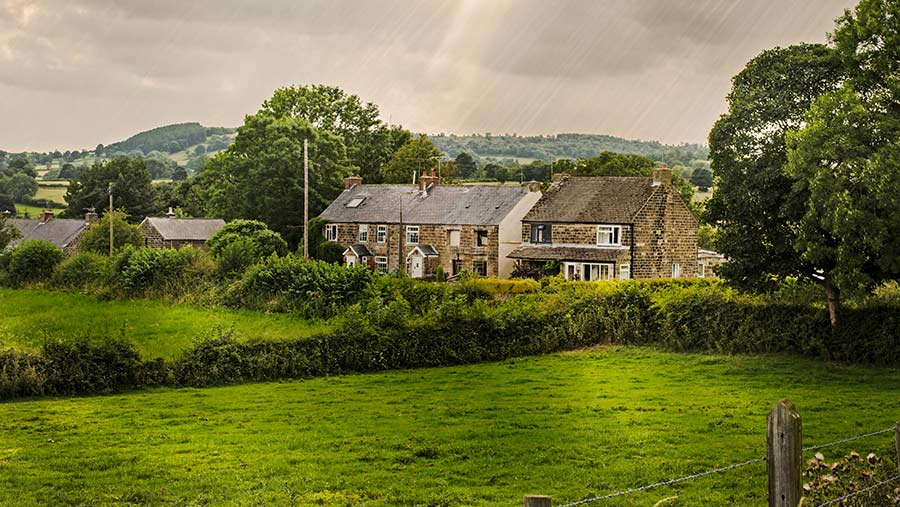Stamp duty and farmland: How it works and what to expect
 © Springfield Gallery/Adobe Stock
© Springfield Gallery/Adobe Stock Stamp duty land tax, charged on property buyers, can amount to a large extra charge on a transaction.
It is vital to understand the stamp duty land tax (SDLT) regime when buying, selling or transferring farmland. How properties are classified can make a huge difference to how much tax is due.
Joe Fletcher-Hunt, partner in the real estate team at Aaron & Partners Solicitors’ Chester office, explains how the system works and highlights some potential pitfalls.
See also: Business Clinic: Must we pay extra SDLT on house with land?
What is stamp duty land tax?
It is a tax that generally must be paid by the purchaser when land worth more than £150,000 changes hands.
SDLT is the name of the scheme in England and Northern Ireland, where it is overseen by HMRC.
Similar tax systems are used in Wales (land transaction tax) and Scotland (land and buildings transaction tax), but there are some key differences in terms of the rates and the timing of payments.
What is so complicated about it?
The tax applies when interests in land or property change hands, but different rates apply for residential, non-residential and mixed-use assets and this can make tens of thousands of pounds of difference to the tax liability.
For example, if the residential rate applies on a £2m property bought by an individual, the SDLT due would be around £150,000.
However, if the property is classified as mixed-use or commercial (also known as non-residential) then the SDLT due would fall to £90,000.
The relationship between the transferring parties also needs to be considered.
If parties are connected through a business partnership or are within the same family group, different exemptions and valuation rules can apply.
For example, if a farming partnership acquires land from an existing partner or the seller joins the partnership (in either case, a “connected person”), the SDLT is calculated by reference to the land’s market value and the ownership shares of the partners when the transfer completes.

© Stephen/Adobe Stock
What sort of sales fall into the different categories?
Non-residential property includes:
- Agricultural land that is part of a working farm or used for agricultural reasons
- Any other land or property that is not part of a dwelling’s garden or grounds
- Six or more residential properties bought in a single transaction
- Forests.
The tax due on bare land and forests is calculated at the non-residential rate.
A “mixed use” property is one that has both residential and non-residential elements, such as a working farm with a combination of a farmhouse, buildings and land.
However, residential SDLT rates are likely to apply where agricultural land is sold as part of the garden or grounds of a dwelling – for example, if a cottage is sold with a few fields.
This is something that farmers selling off assets may want to consider in case there are ways to structure a sale to make it more tax-efficient.
How are gifts of land treated?
Whether SDLT is due on a gift will depend on whether there is a chargeable “consideration”.
For example, if there is a mortgage outstanding on the property that will be taken over by the new owner, then SDLT would apply to the debt.
Similarly, if someone gifts land or property in return for services or works, then SDLT would apply as it would be deemed there was a price attached to the delivery of that service.
If land is gifted from an individual to a company and the person is “connected” to the company, then SDLT would also be due and be calculated on the market value of the property transferred.
The definition of a connected person covers relatives and people who have some involvement with the company concerned.
Generally speaking, transfers of property made according to the will of a deceased owner do not attract SDLT.
What are current SDLT rates in England and Northern Ireland?
Non-residential and mixed-use property rates
The rates for non-residential and mixed-use property are the same and are as follows:
| Property, lease premium or transfer value | SDLT rate |
| Up to £150,000 | 0 |
| The next £100,000 (from £150,001 to £250,000) | 2% |
| The remaining amount (the portion above £250,000) | 5% |
Residential property rates
| Property, lease premium or transfer value | SDLT rate |
| Up to £250,000 | 0 |
| The next £675,000 (the portion from £250,001 to £925,000) | 5% |
| The next £575,000 (the portion from £925,001 to £1.5m) | 10% |
| The remaining amount (the portion above £1.5m) | 12% |
For purchases of residential property by a company or that will result in an individual purchaser owning more than one property, the rates are increased by 3 percentage points.
Do all farm sales fall into mixed use?
Most transactions where there is a farmhouse, buildings and land being farmed are classified as mixed use.
However, HMRC is more closely scrutinising claims for mixed use where it believes the property is not a working farm.
There have been a number of tribunal cases where a country home has been sold with a small amount of land and the purchaser has sought to claim for mixed use.
In most instances these claims have been rejected on the basis that the land is seen as part of the “grounds and garden” of a residential property.
In cases where it may not be clear cut and HMRC decides to review a claim, it will seek evidence to show there is a commercial element to the land that goes with the farmhouse.
This might include replies to enquiries between the vendor’s and buyer’s solicitors that the land has been farmed.
For example, this could be evidenced by milk contracts, leases, grazing licences, tenancy agreement and records of subsidy claims over the years.
HMRC is also likely to look at the sales particulars to see how the property was marketed.
If the brochure describes it as a house with some grounds, rather than a commercial farm with house, then it points to it being residential.
It may also consider how much of the value of the property is attributable to the house versus the land.
Are any reliefs available?
There are no further SDLT reliefs available to farmers if the property they are buying falls into mixed use.
However, if buying a property that falls into residential use and has more than one residential space, such as a farmhouse with a number of workers’ cottages, it may be possible to claim multiple dwellings relief to reduce the tax bill.
Partnerships and companies (non-natural persons) purchasing residential property worth more than £500,000 can claim relief from the higher SDLT rates if the purpose is to house employees of the farming business.
However, reliefs are a niche area and need to be carefully thought through with professional advice and support sought first.
What’s the process for paying SDLT?
A pitfall for farmers who are used to operating as a partnership or sole trader can be that they assume the tax is paid at the end of the financial year.
However, SDLT needs to be paid within 14 days of the effective date. In most cases this is completion, but there are some limited instances when it may be sooner than this.
Tax may not always be payable, but a return will need to be submitted to HMRC if the consideration (value) in the transaction is more than £40,000.
It is a self-assessed tax, but where there is a question mark over whether the property is classed as residential, non-residential or mixed use, it is better to pay the residential rate of SDLT and then apply for a refund of the difference.
This is because if the lower rate is incorrect, HMRC can apply penalties and interest to the shortfall.
If HMRC agrees that a property is mixed use or non-residential, then it will repay any tax overpaid, with interest.
